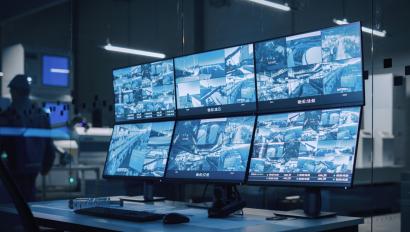What Is CCTV Monitoring and How Does It Work?
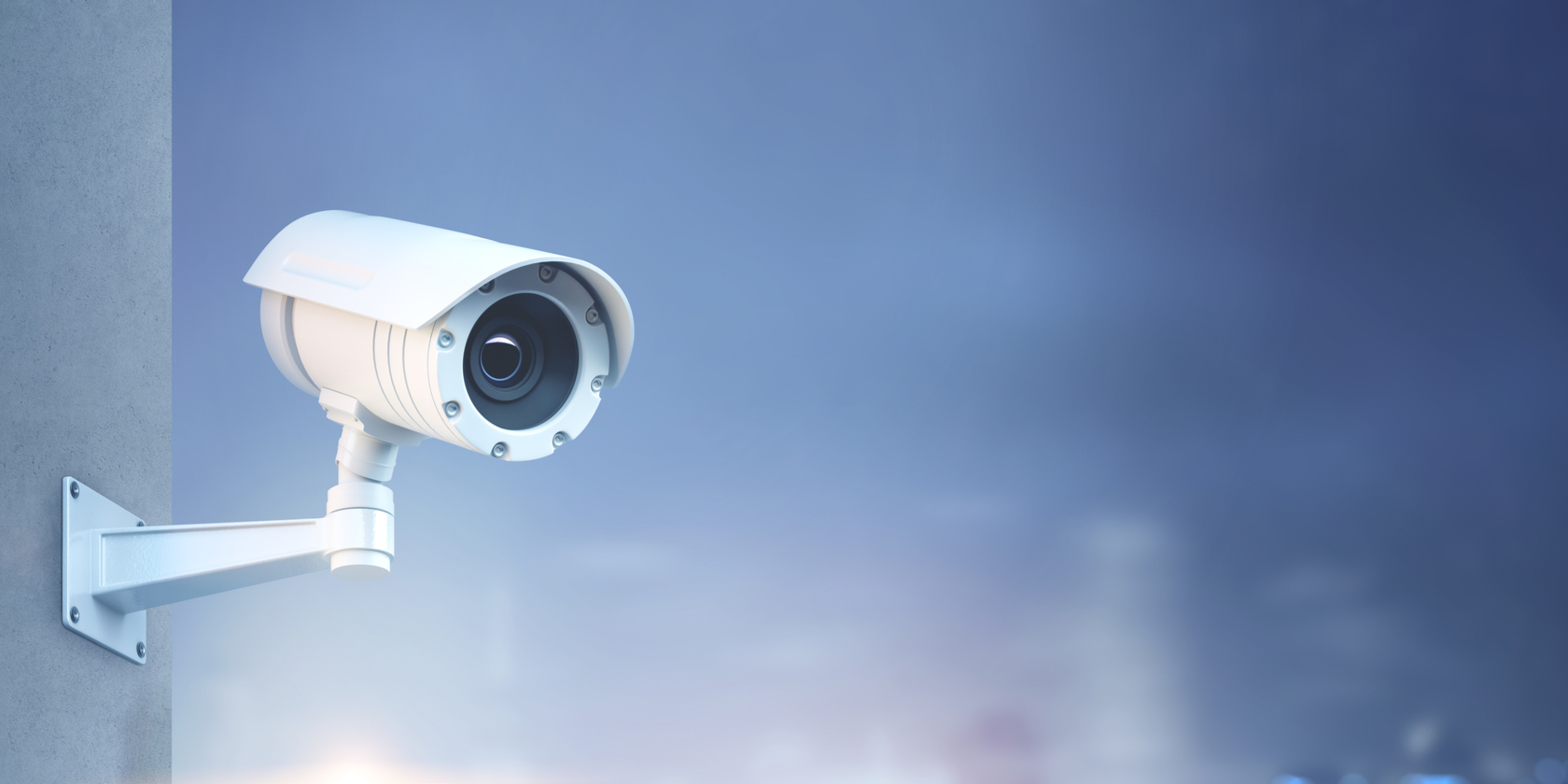
Monitored Security services have become critical components of business infrastructures. They’re helping organisations improve business security, create safer spaces, and optimise operations.
Businesses have always needed to adapt and evolve, take the COVID-19 pandemic as a prime example, and so have the systems that support them. As a result, business security technology and services have had to develop at an equally rapid rate, as they play an ever more important role in helping to keep businesses moving forward, safely, and efficiently.
In this article, we’ll focus on CCTV Monitoring, which is a key part of Monitored Security. You’ll discover that there are many new opportunities and services to be found when you combine modern CCTV technology with professional security monitoring services.
We’ll cover:
- What is CCTV Monitoring?
- How does CCTV Monitoring work, and what do you need to enable it?
- Intruder Alarm Monitoring with Video Verification
- Remote Guarding Services and Remote Access
- How to implement CCTV Monitoring into your Business Security plan
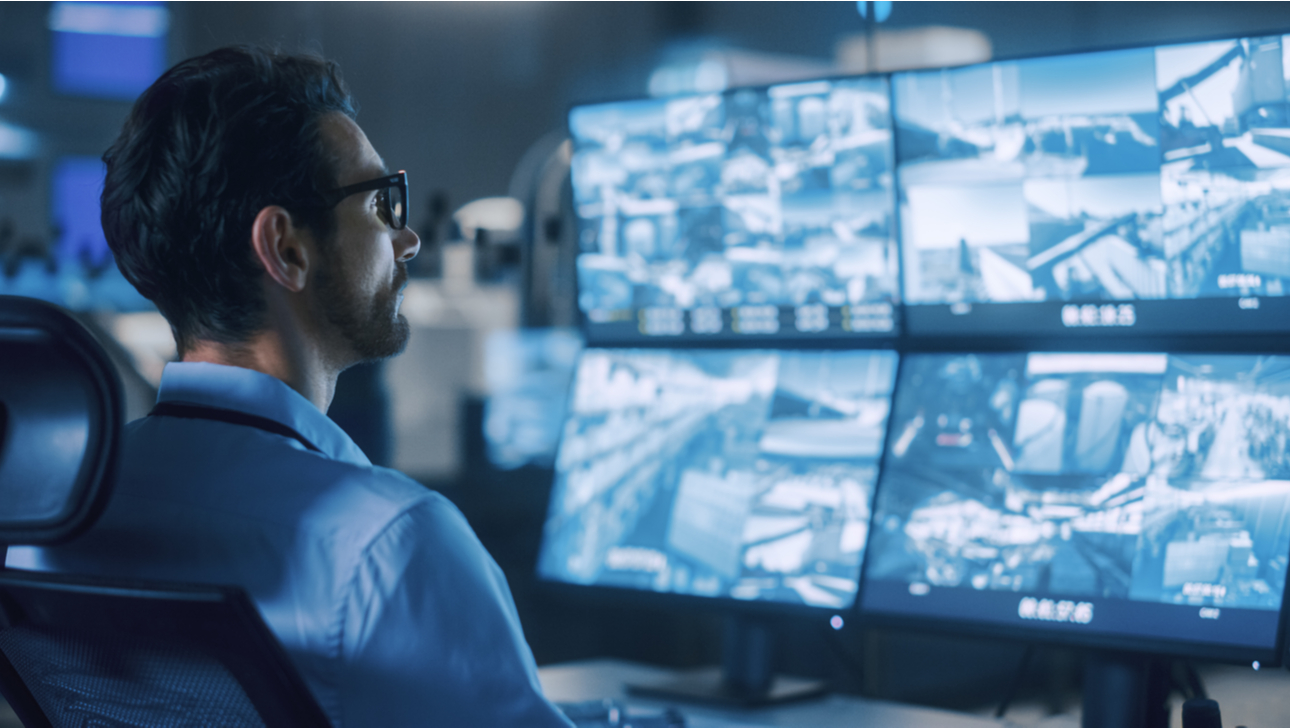
What is CCTV Monitoring?
CCTV Monitoring connects your business security to a professional Alarm Response Centre (ARC) where teams of security operators can fulfil a number of different duties related to your security.
It can amplify the effectiveness and efficiency of your security strategy by helping to provide 24/7 security coverage, alarm verification (which can help reduce false alarms), quicker response times, and other services that were traditionally fulfilled by physical on-site guards (like site tours and access control).
CCTV Monitoring can even help businesses reduce their annual security costs by reducing or replacing reliance on physical guarding services – we’ve seen cases where our customers have saved more than 60%.
CCTV & Video Surveillance has probably advanced more than any other security technology in recent years. We’re now seeing the adoption of modern systems by businesses of all sizes, who are eager to take full advantage of better cameras, cloud-video surveillance, and the rich data that the footage provides.
But, when push comes to shove, events that occur when an alarm is triggered often require human intervention to either investigate or act if it’s a confirmed alarm. Or to put it another way, “Even with advances in AI and machine learning, security remains a question of people, especially when it comes to commercial security monitoring. Beyond technological progress, organisations need accountable experts to actively monitor their operations and make the call when there’s a threat.” (Matthieu Le Taillandier - General Manager - France and Western Europe, Securitas Technology).
As you see, CCTV Monitoring works to bring together the benefits of technological advances with highly trained security operatives. Next, we’ll explain how CCTV Monitoring works and what you’d need to implement this service at the heart of your business security strategy.
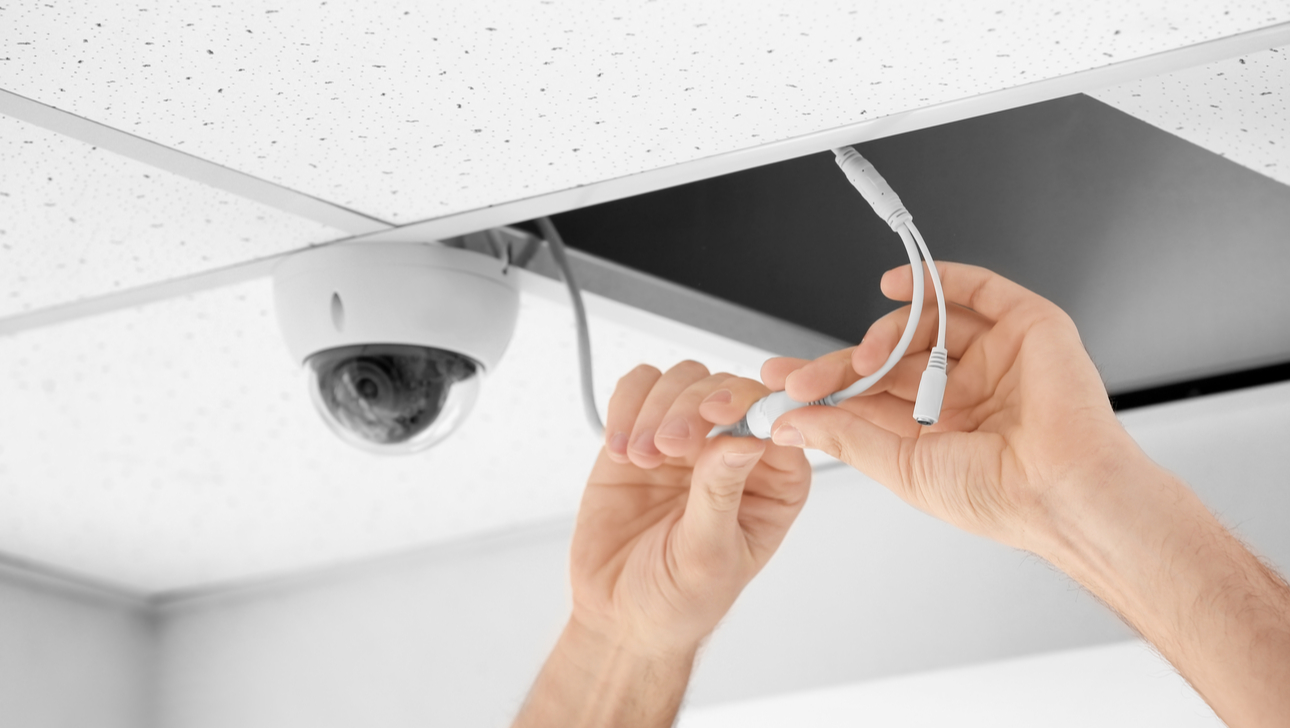
How does CCTV Monitoring work, and what do you need to use it?
CCTV Monitoring connects your business to a remote Alarm Response Centre (ARC) where security operatives can help to cover your business 24/7 providing vital security support. Most businesses utilise Monitored Security (including CCTV Monitoring) for responding to alarm signals when their system is triggered.
In terms of how it works, there are two main options for UK businesses to take advantage of CCTV Monitoring.
- Connecting Intruder Alarm and CCTV systems to a professional ARC.
In this instance, if your intruder alarm is triggered, it sends a signal to the ARC where it may be confirmed using sequential information (we’ll explain this in the next section on Video Verification for Alarm Monitoring). ARC operators can then review video footage to visually verify an incident and even share details with the police.
- Connecting a detector-activated CCTV system to a professional ARC.
In this instance, a detector-activated CCTV system is installed combining the roles of both intruder alarm systems and CCTV. The CCTV alarm system is triggered and sends a signal to a professional ARC. Operators can then review video footage to visually verify an incident and share details with your keyholders or the police (BS 8418 system is required for police response).
The first option is the most common, where both intruder alarm and CCTV systems are installed and connected to a professional security monitoring centre. They are more readily available than the second option, which would require additional detail, design, and equipment.
What do you need to enable CCTV Monitoring?
There are three important considerations if you want to benefit from CCTV Monitoring.
- Installing the right technology
- Working with a professional security installer
- Obtaining a Unique Reference Number (URN) for your site for police response
The right technology is important and the first thing you’ll need to do is ensure your CCTV system is capable of being connected to a professional ARC (and your intruder alarm if applicable).
Most modern systems are capable of being connected to remote security monitoring centres, but it’s still important to check. If your system can’t be connected because it’s of its age, then you may want to consider upgrading it to ensure your business has the best protection.
If you are considering upgrading your existing business security systems or installing a new system entirely, this is the best time to talk about monitored security solutions as well.
Professional Monitored Security providers require businesses to have a professionally installed security system for it to be monitored as part of their own compliances with accreditations and emergency services. This is the case for Securitas Technology at both of our NSI Gold Accredited ARCs, which are based in the UK.
Lastly, to benefit from police response in the event of a confirmed alarm, your system will need a Unique Reference Number (URN), which can be obtained from your local police authority.
Don’t worry, a professional security expert will be able to guide you through the whole process from beginning to end, ensuring everything is covered along the way.
Would you like to speak to a Monitored Security expert? Get in touch today.
Alarm Monitoring with Video Verification
We previously mentioned that Alarm Monitoring is a fundamental reason why most businesses choose monitored security. We’ll briefly explain what it is and how it can be further enhanced with the help of CCTV Monitoring.
Alarm monitoring works by sending signals from your intruder alarm or detector-enabled CCTV system to a professional ARC. Security monitoring service providers use what’s known as Sequential Verification to confirm if an alarm signal is related to a genuine security incident – like somebody breaking into your building.
Sequential Verification works by looking for specific patterns in alarm triggers that are common in real-life events. For example, it is unlikely that a burglar would trigger just one detector if they broke into your site or building, so it would be a false alarm if just one detector is triggered on one occasion.
It’s more likely that a burglar would trigger a combination of detectors in different areas as they move around the building – so when this happens, it would be verified by the system and sent to operators in your ARC to investigate and respond (or directly to the local police if they are ECHO-connected).
Adding CCTV Monitoring to visually verify alarms
When you combine intruder alarm monitoring with CCTV monitoring, your system can provide additional information for security operators to visually verify an incident at your facility or building.
With CCTV monitoring, video footage can be sent to an ARC. This can enable them to visually verify what is happening, as well as provide detailed information to the authorities in the event of a police response.
The latest CCTV monitoring systems even use AI to identify people or vehicles moving through your premises, sending a clip to the ARC with a timestamp, location, and outline drawn around them.
You can learn more about Alarm Monitoring and how it works in this helpful guide.
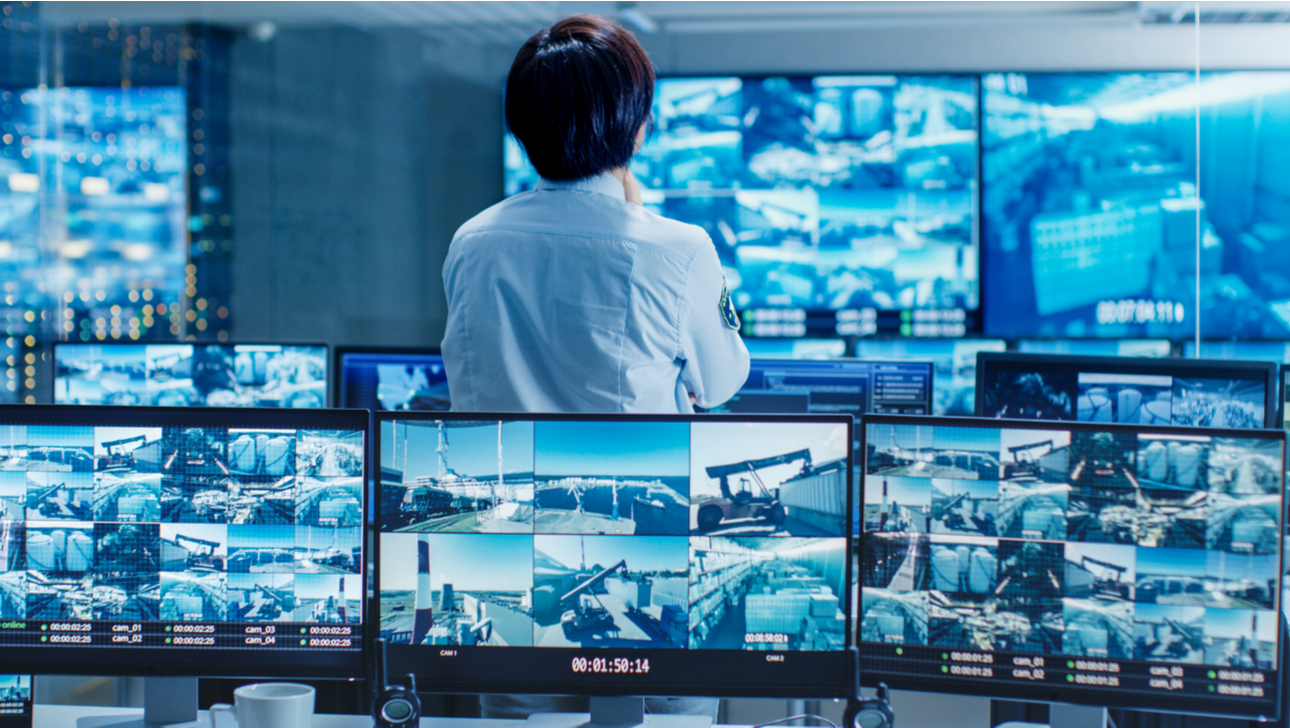
Remote Guarding Services and Remote Access
Traditionally, CCTV cameras were little more than extra eyes on your premises, useful but albeit limited in functionality. Physical on-site guards were still needed to monitor and manage the system, and to respond if they did pick up any footage where a threat is detected.
The technology behind CCTV & Video Surveillance has advanced to the point where the footage no longer needs to be monitored 24/7 a person for an alert to be raised. As we’ve just learned with Alarm Monitoring and video verification, the systems enable this to be done automatically and remotely.
The storage of the footage no longer needs to be on-site either, cloud video solutions are now the preferred method. Neither does the monitoring or management of your surveillance, as these too can be fulfilled remotely. In fact, many security systems can now be monitored and managed by you on your mobile phone.
But that doesn’t solve the need for outsourcing security functions, nor does it bring the peace of mind or flexibility that comes with knowing that a team of security operators is supporting your site. This is where CCTV Monitoring can help.
Remote Guard Tours and Video Safeguard
With CCTV Monitoring, the main duties once performed solely by on-site guards can now be achieved completely remotely. Trained operators in ARCS can do more than simply respond to alarms, they can carry out virtual guard tours of your site or building – just like an on-site guard would but with the added benefit of recorded footage.
They can also act as a chaperone to keep an eye on anybody entering or leaving the site alone, Securitas Technology’s service is called Video Safeguard, which can be added to your monitored security solution. You can even provide personal security support to your employees well beyond the boundaries of your site, with the help of a simple app that our ARCs can also monitor – learn more about Securitas Personal Safety here.
Remote Access Control
CCTV Monitoring can also empower businesses to fully outsource the control of their key access points too – which could be an opportunity for your business if for example, the site needed to be accessed outside of office hours or if you’re looking to replace the need for a physical guard in reception or in your car park.
Operators in remote ARCs can also manage your Access Control systems, to respond to a request from anyone trying to access your site or building and use the CCTV footage to visually verify who they are before deciding whether to let them in or not.
All these services can be implemented or added to your business security strategy. This can often come at a reduced cost too, providing great options for either supplementing physical guarding on your site or replacing it entirely.
You can read this helpful article on working out the true cost and potential savings for CCTV Monitoring.
How to implement CCTV Monitoring into your Business Security plan
Modern business security relies on combining the latest technological advances with professionally managed services to provide a 360° solution, and we fully expect that trend to grow in the future.
That’s why monitored security services like CCTV Monitoring should be a core consideration when it comes to planning your strategy for safeguarding your assets, protecting people, and optimising your operations.
We’re seeing businesses rely on multiple systems more than ever, with security monitoring services acting as the glue that brings everything together. With that in mind, security providers who can support the design and planning, installation, maintenance, and management of their security are important.
Our advice is to engage with a security expert as soon as possible who will be able to understand your specific needs and create the best bespoke solution to suit your business. The great thing about monitored security is that it can help to create a flexible and scalable solution, as we’ve seen with CCTV Monitoring.


